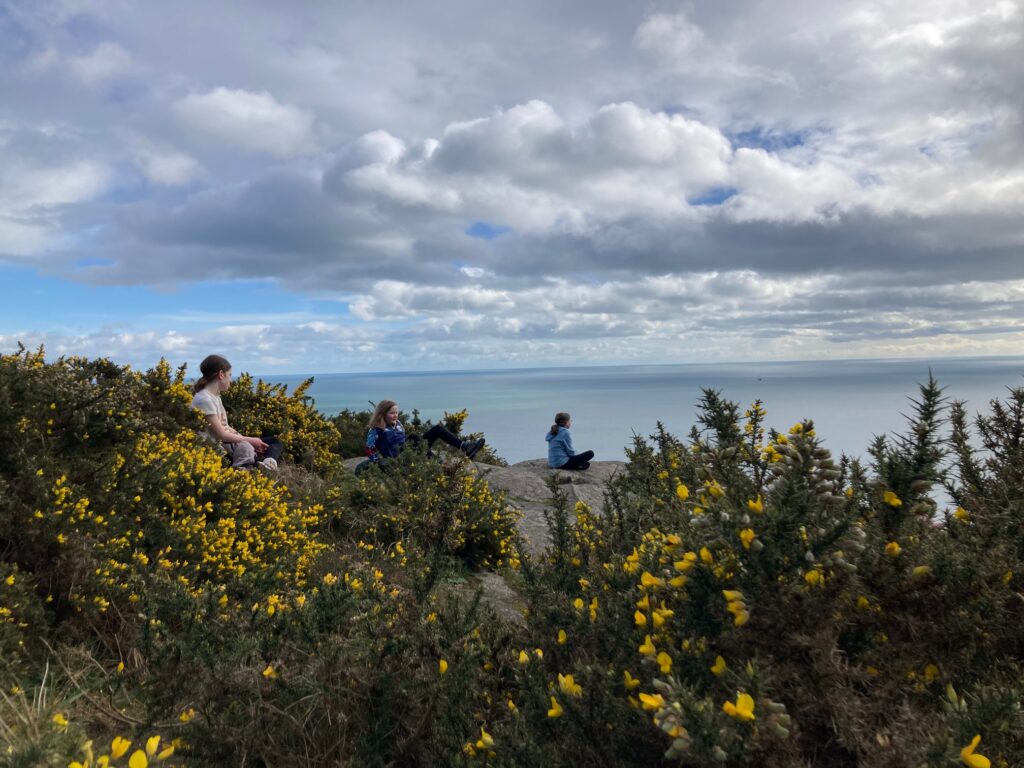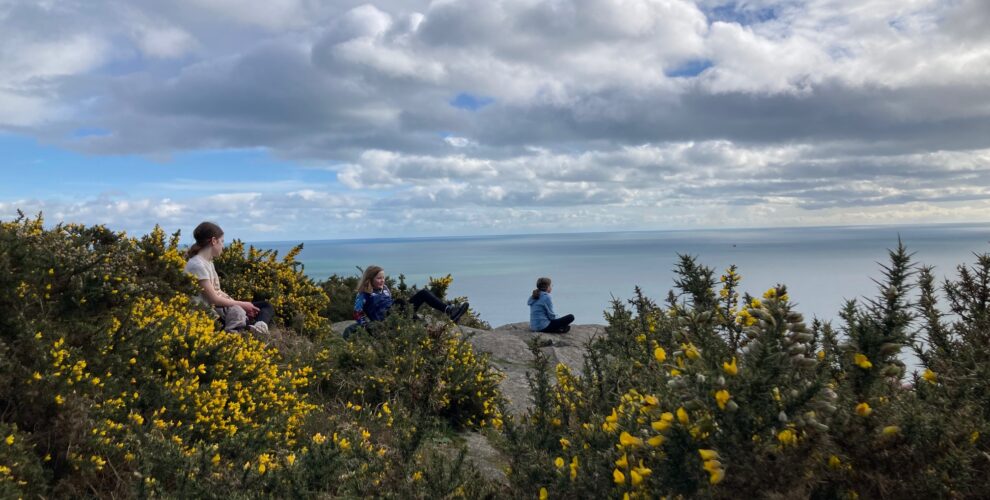4th class started off the day searching for hazel flowers. Hazel flowers are tiny. We could see the catkins full of pollen dangling from the branches but finding the tiny pink flowers was a challenge. It’s amazing the think that this is how a hazelnut is created.
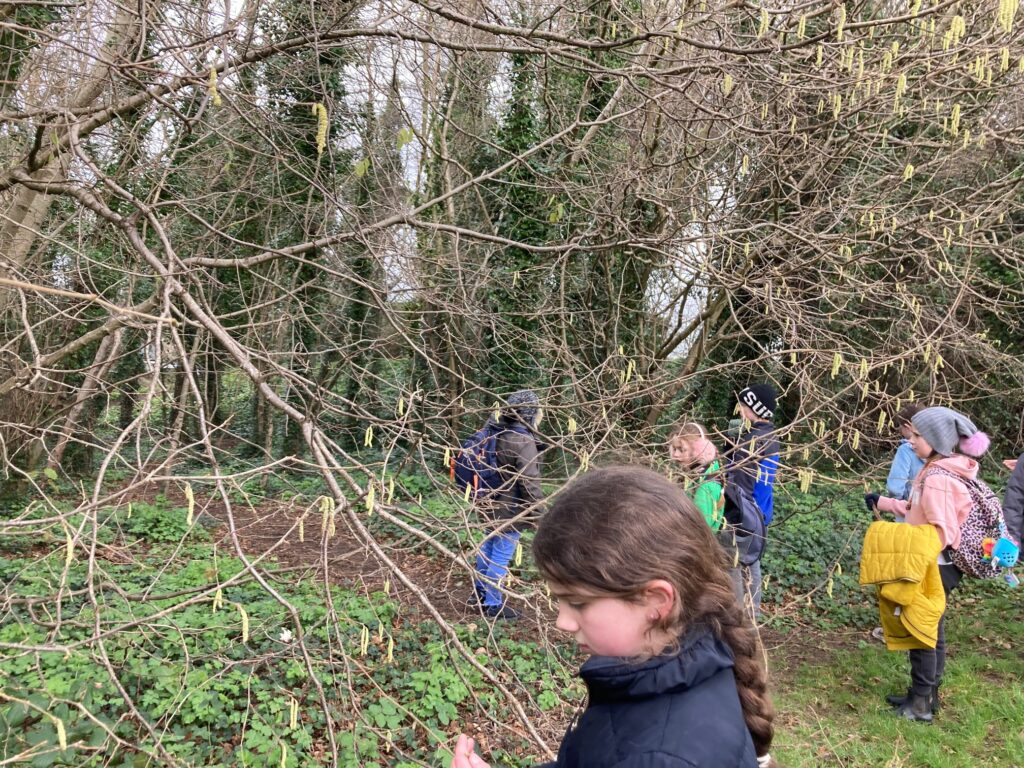
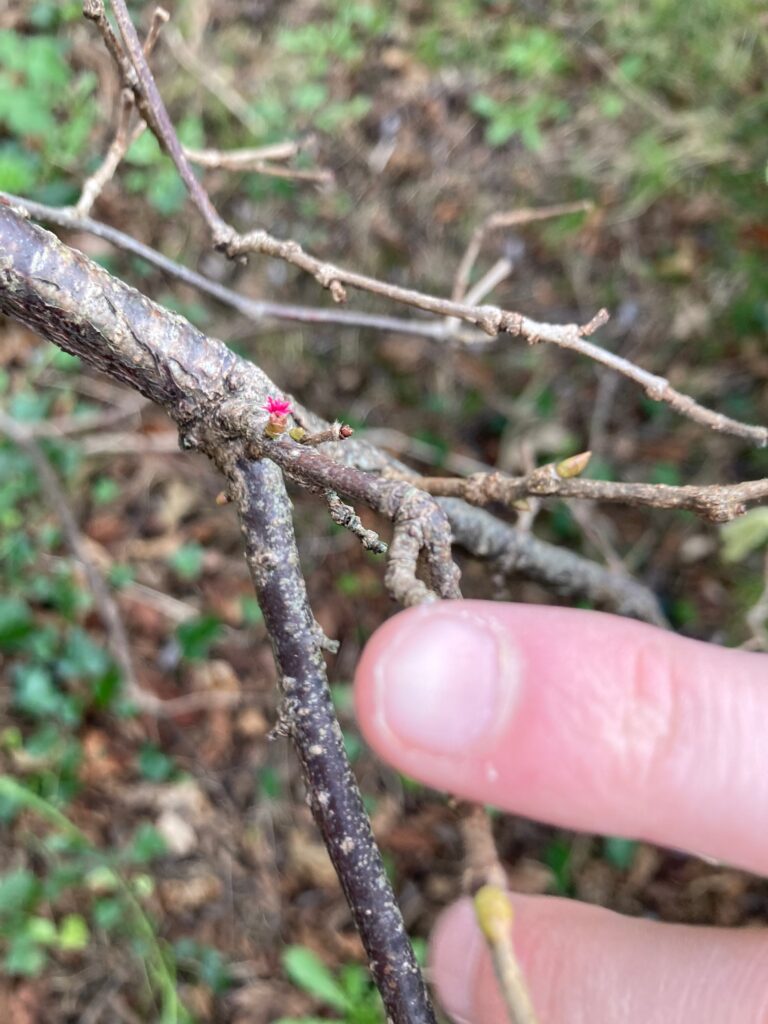
We also found evidence of who ate the hazelnuts from last year. The nuts were gone but the shell remained. One was probably nibbled by a mouse and the other cracked by a squirrel. Can you tell which is which?
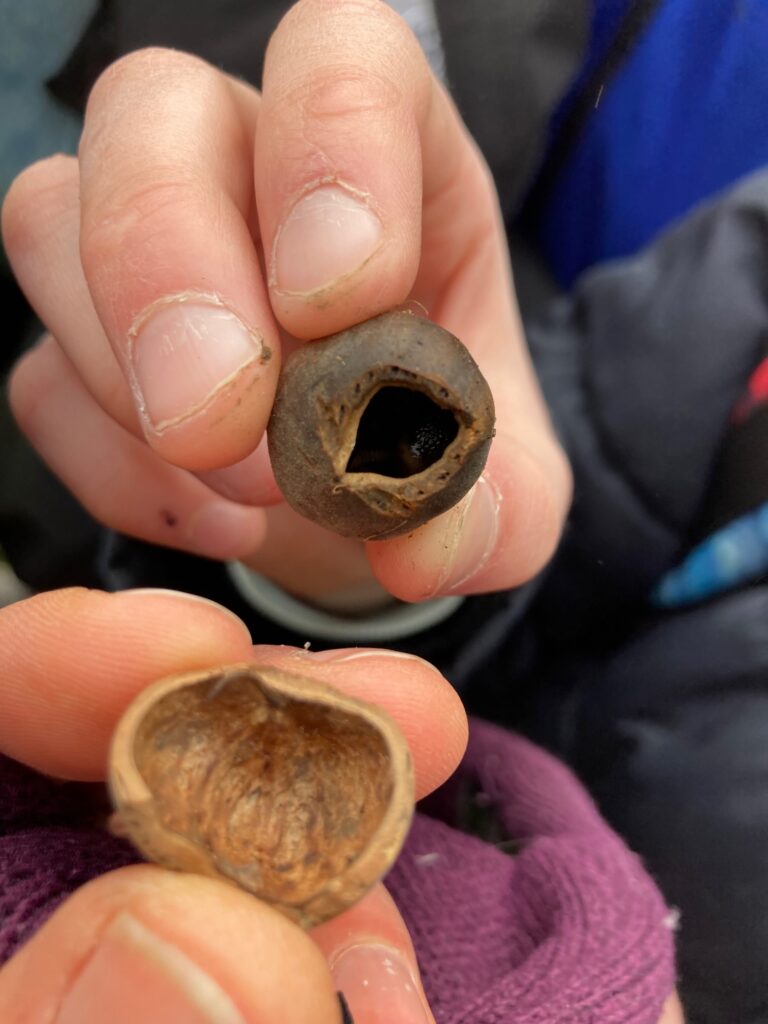
On our way to base camp we found other signs of Spring. The beech trees were still bare like skeletons but some of the hawthorn tree leaf buds were starting to burst and we got to taste the fresh hawthorn leaves.
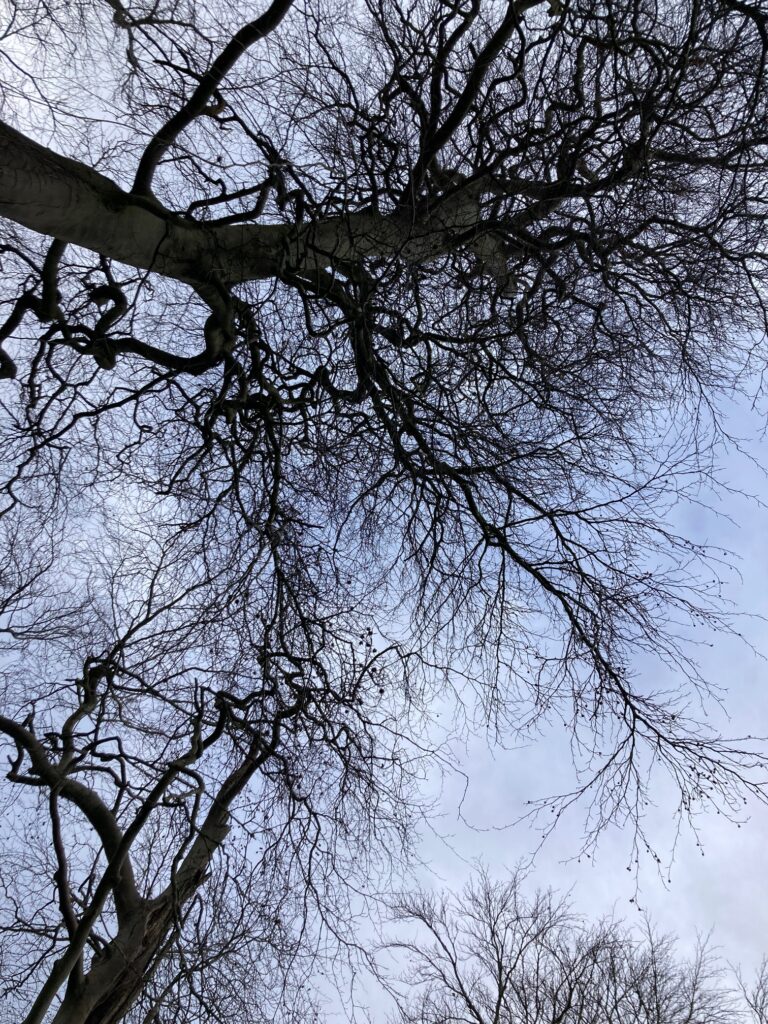
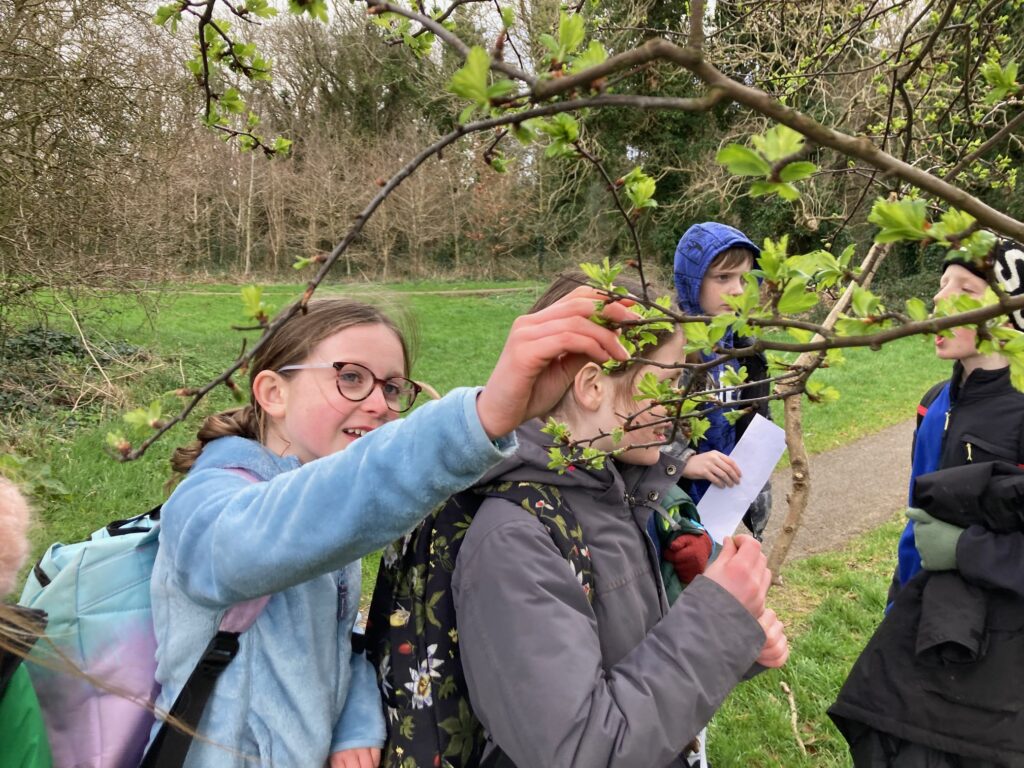
We also got to taste a plant called Alexanders that is a member of the celery family and tastes a little like it.
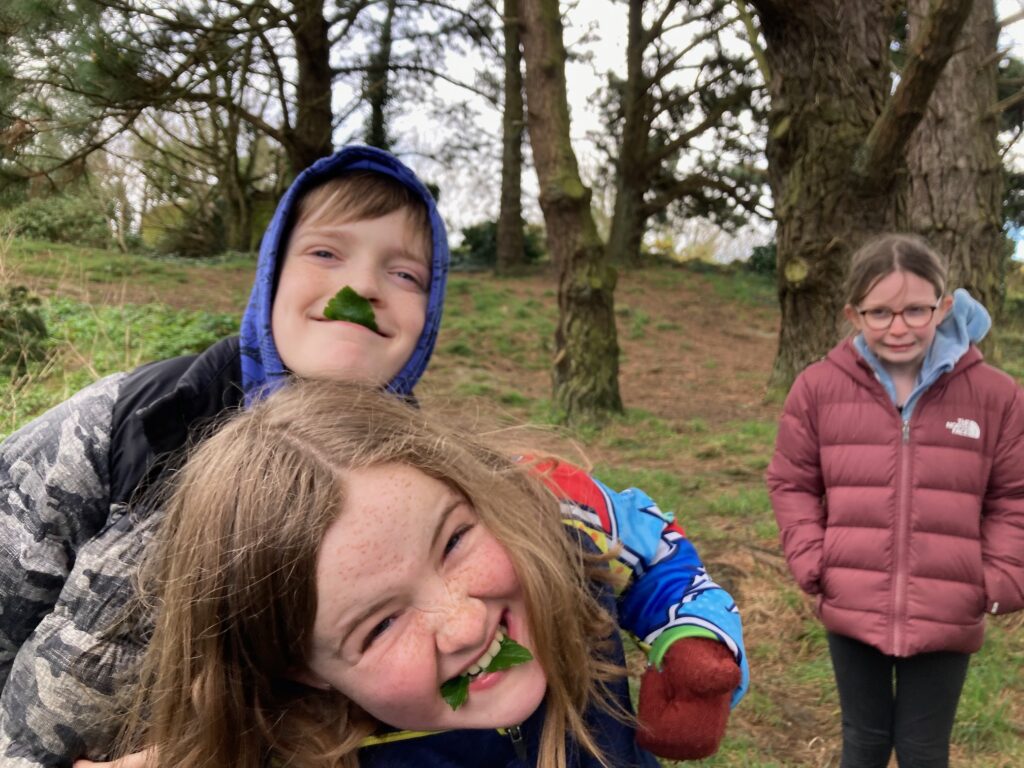
We had lots of fun exploring base camp and hanging out with our friends (hammocks help the hanging!).
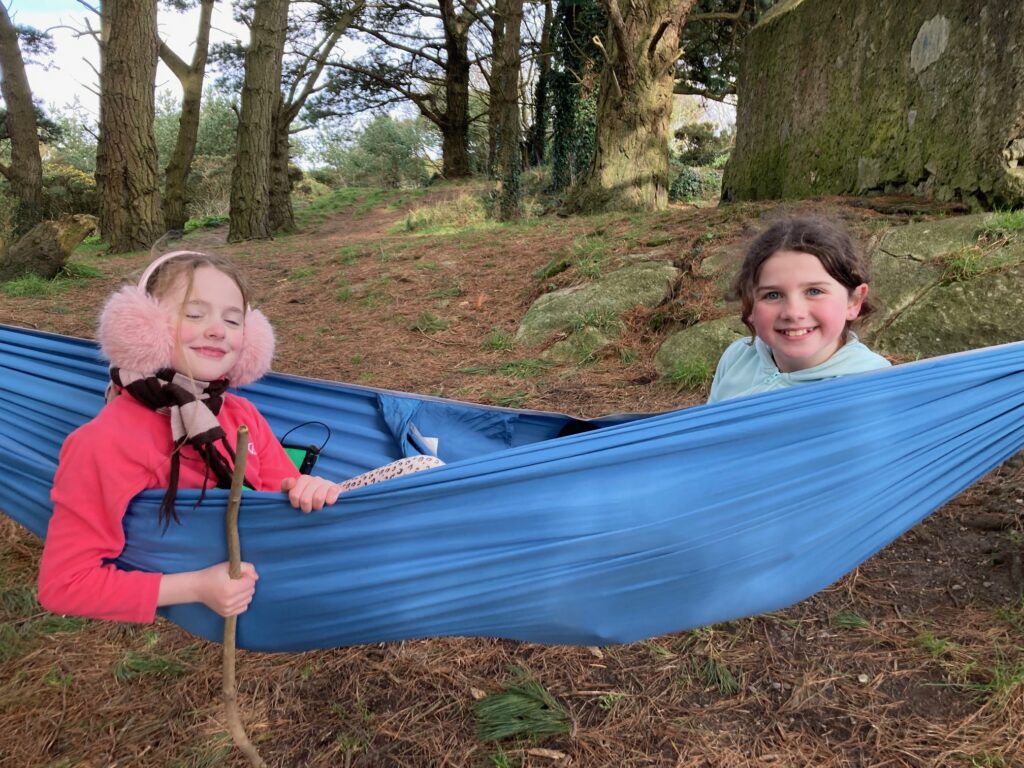
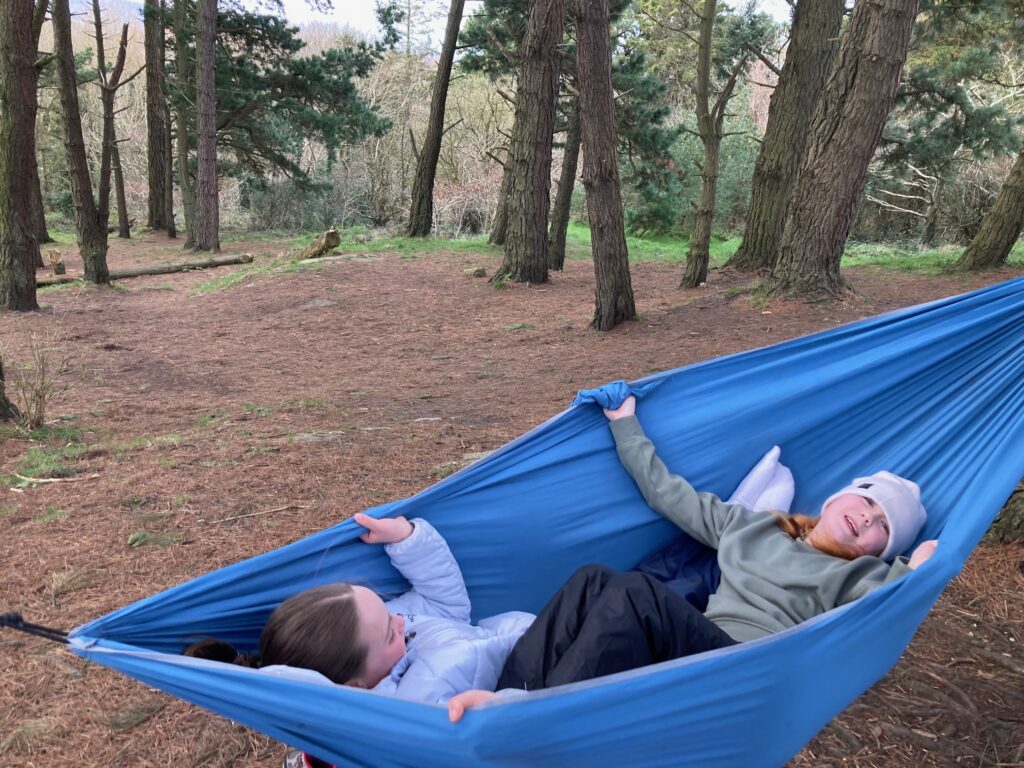
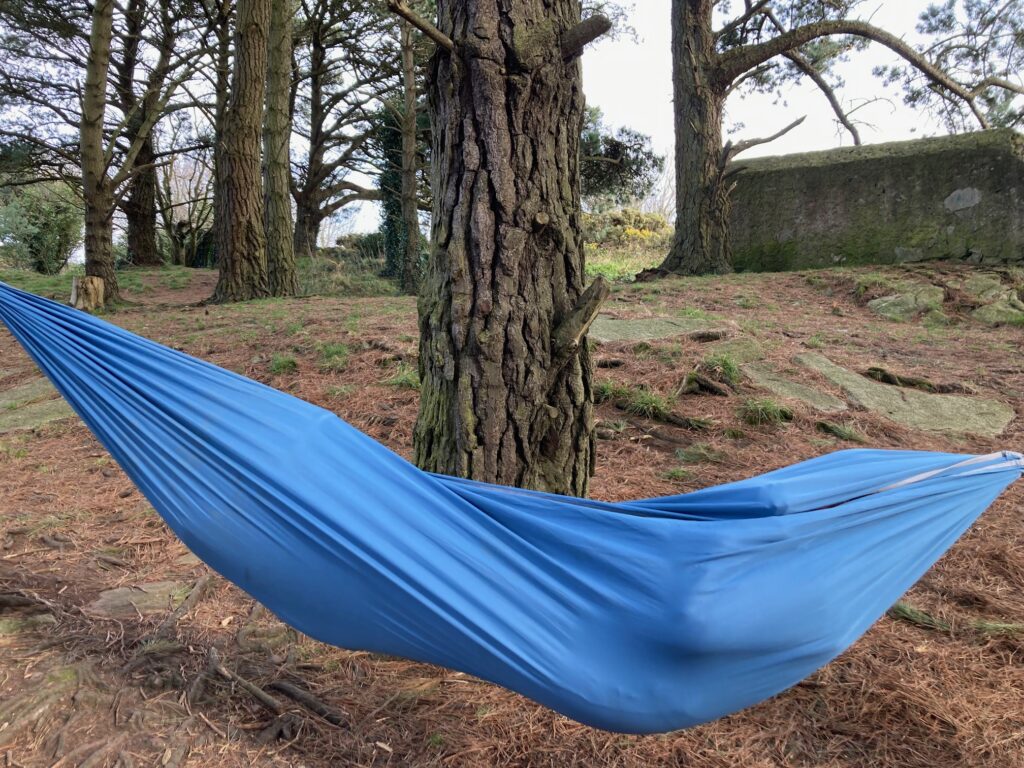
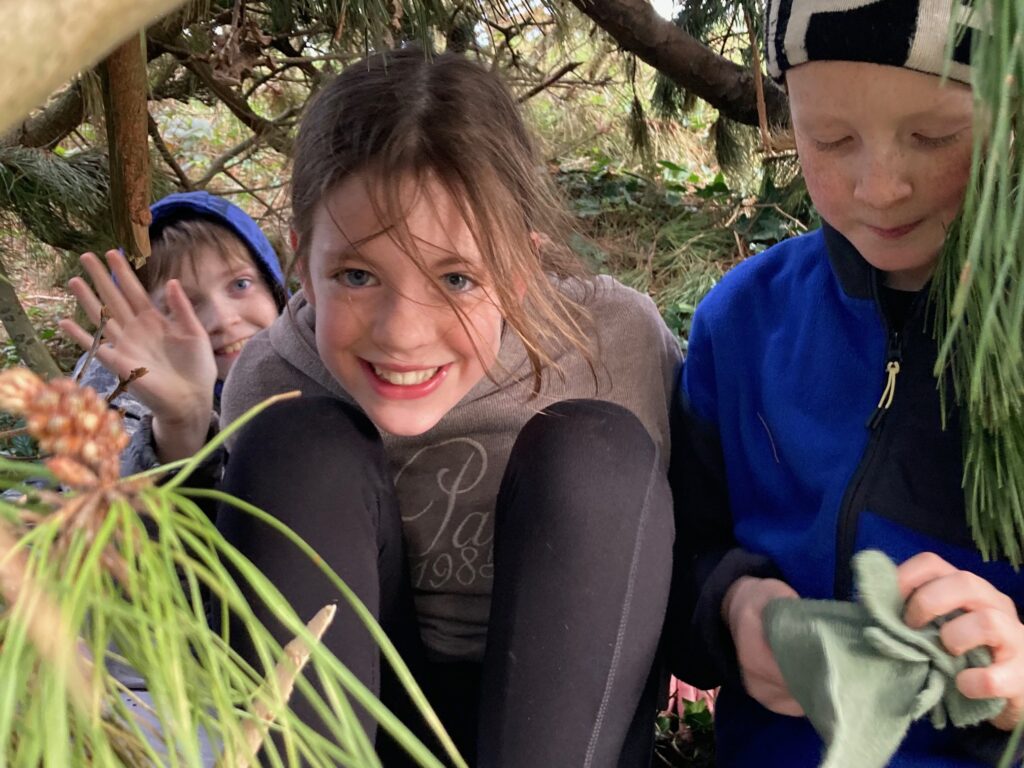
Fundamental movement skills
So many of the fundamental movement skills happen naturally during a forest school session. Each child needs many opportunities to develop these skills especially during their primary school age. https://www.hse.ie/eng/about/who/healthwellbeing/hse-education-programme/resources/fundamental-movement-skills-poster.pdf
Locomotor Skills – Walking, Running, Jumping (for distance, for height, one leg to another), Hopping, Leaping, Skipping, Swinging, Side stepping, Dodging, Galloping, Climbing, Crawling
Body Control (Stability) Skills – Balancing on one foot, Walking on a line or a beam, Climbing, Rolling (forward roll, log roll), Twisting, Turning, Rotating, Landing, Stopping, Bending, Stretching
Tea making – Male pine cones
We made tea out of the pollen from the male pine cones.
Pine cones grow on pine trees. They are how pine trees reproduce, or, in other words, make more trees. Usually, male and female pine cones are born on the same tree. Typically, the male cones, which produce pollen, are located on the lower branches of the tree. This is to prevent the pollen from falling on the female cones of the same tree.
When you imagine a pine cone, you are probably imagining a female pine cone with woody, spirally scales. This is because male pine cones are much smaller and live only for a short length of time, usually in the spring. Male pine cones do not make the hard-shelled woody case like the female pine cones do. They are soft and spongy.
Female pine cones use their woody structure to keep their seeds safe. They keep their seeds safe so the seeds can hopefully be pollinated and grow.
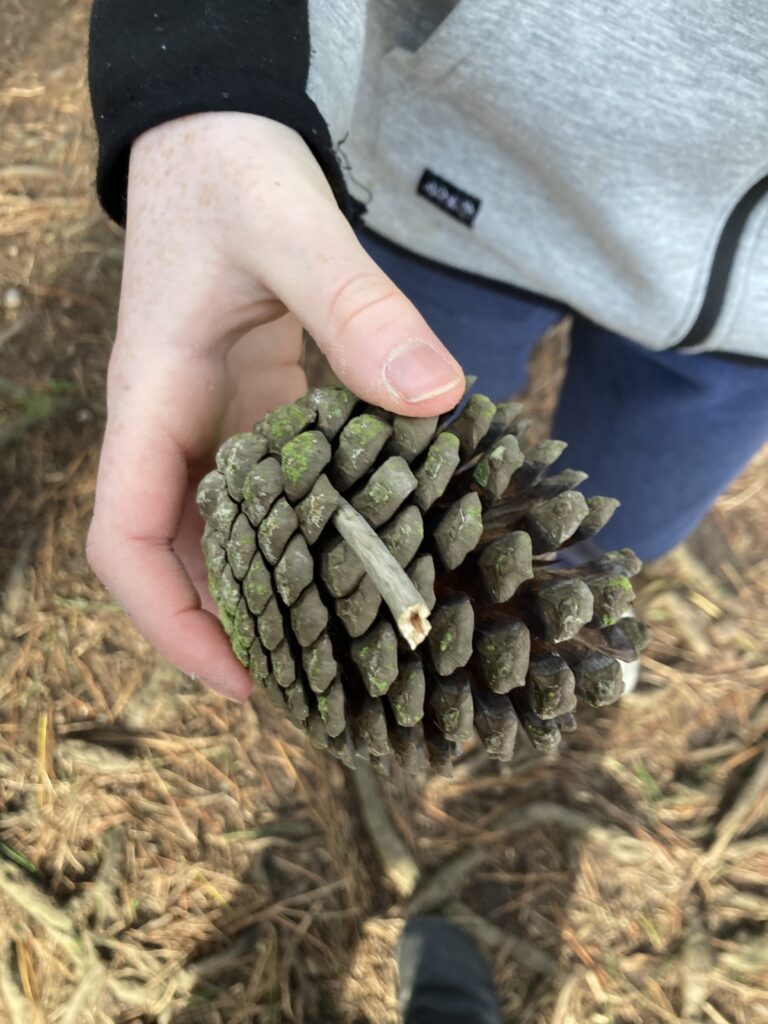
Male pine cones produce pollen, which is like a powder. The male cones release their pollen, which is carried around the air by blowing wind, and hopefully to another female pine cone on a different pine tree. If the pollen reaches a female pine cone, this process is called pollination.
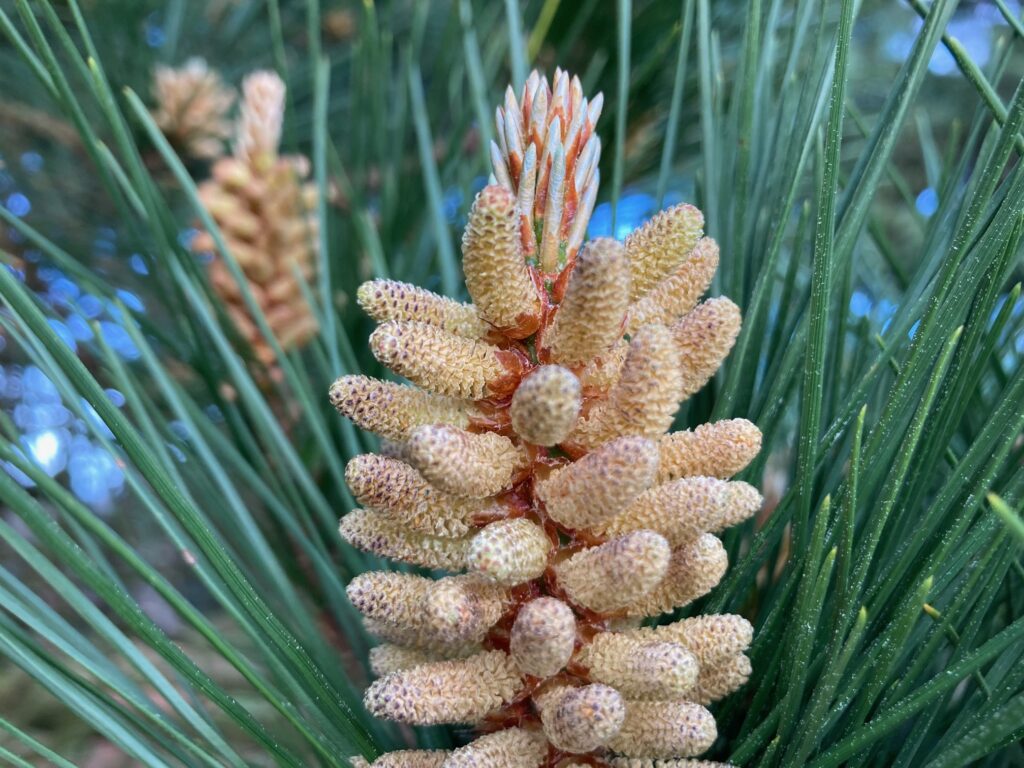
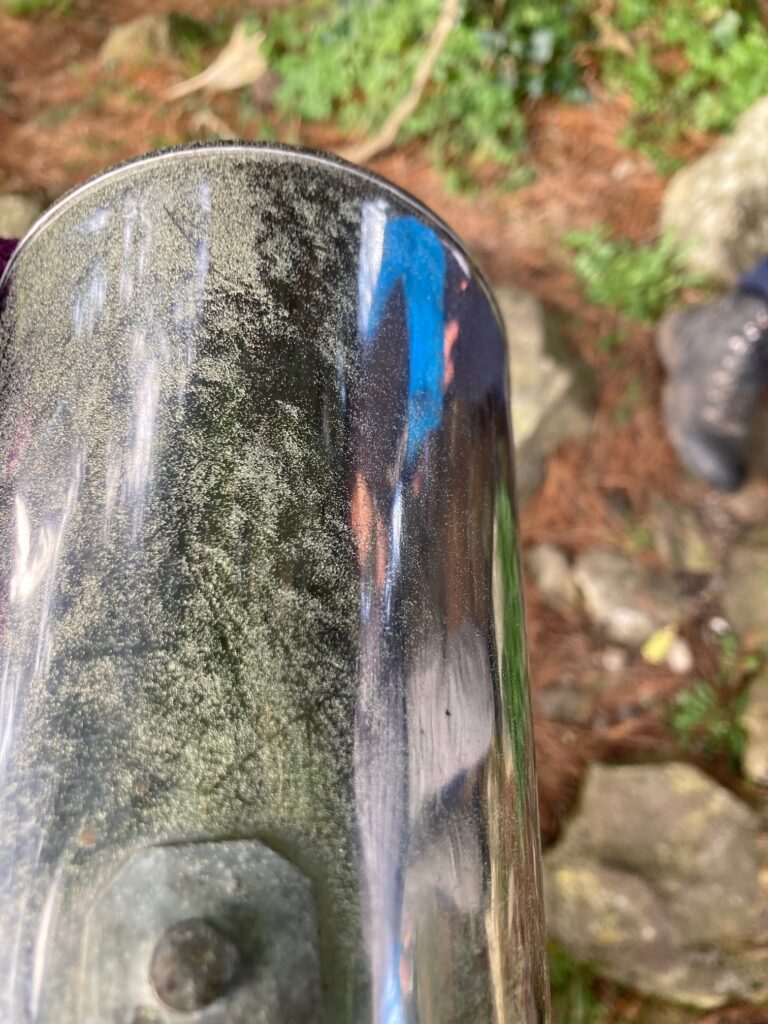
After pollination, and as time passes (usually about two to three years), the pollinated pine seeds grow and eventually peel loose and off of the cone and fall to the ground. If a good spot for the seed is available, a new pine tree will grow!
During sit spot I noticed:
- sun shining on my face with my eyes closed and when I opened my eyes the gorse was so bright.
- that the sea was loads of shades of blue
- there’s new buds starting to open and that there’s still old seeds still on the trees
- the gorse was blowing in the wind and I found that quite relaxing
- I was on a rock and I saw a worm burrowing into the soil
- the waves were waving
- when I picked the gorse, after I let go, it went from side to side
- sun beating down and it was really warm and relaxing
- the smell of the gorse flowers was like coconut and the pea pods on the gorse bush
